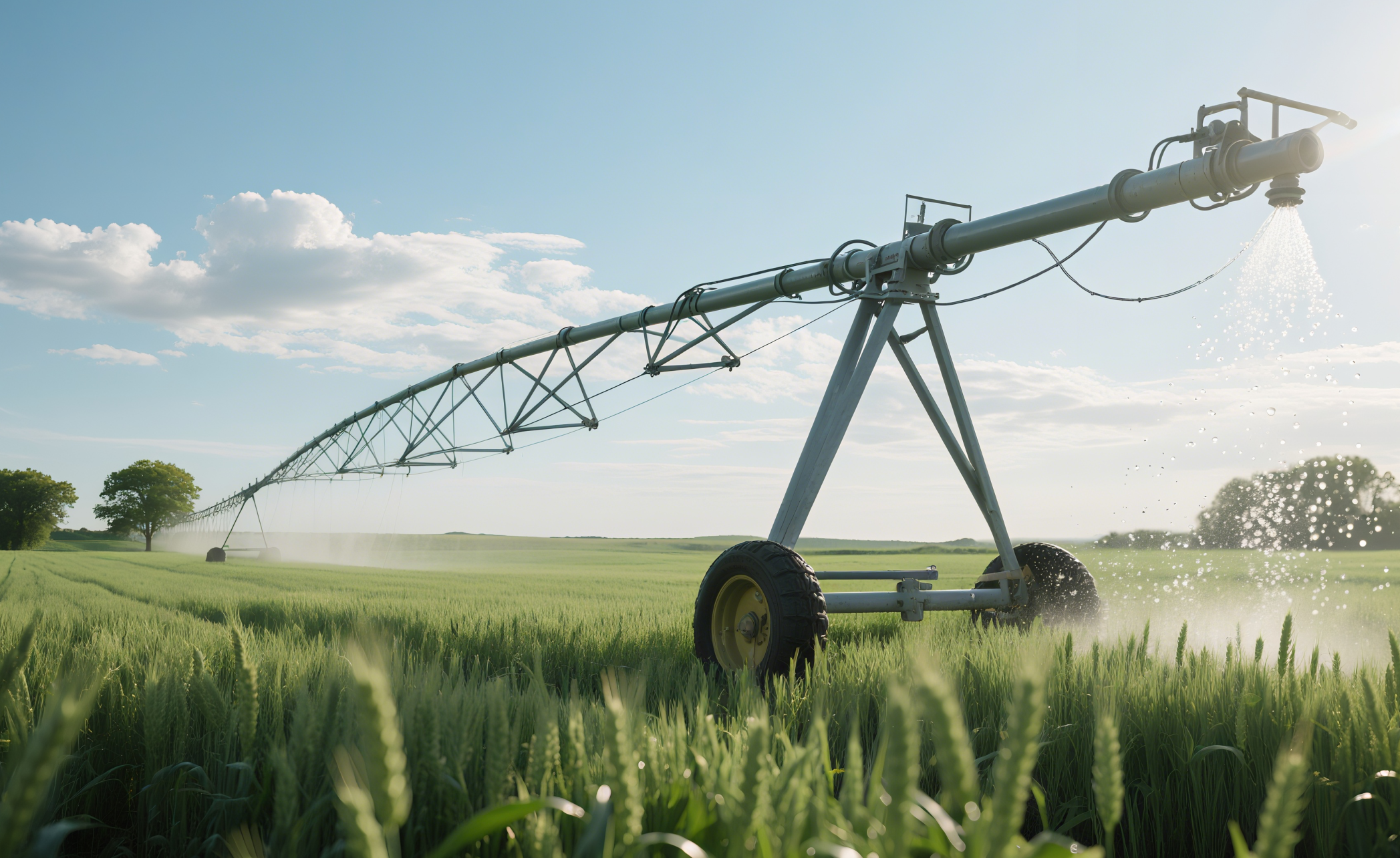Over the past decades, pivot irrigation has become an integral part of modern farming. But what exactly is a pivot irrigation system, which scenarios are best suited?Here’s a short introduction to Pivot Irrigation. In a nutshell, pivot irrigation is considered the most efficient method of irrigating large tracts of agricultural land. Since the 1950s, center pivot and lateral move systems have evolved into the go-to choice for ambitious farmers, both in the US and overseas. But let’s start with the basics. The Structure. A pivot system essentially consists of multiple wheeled towers, which are connected at the top via horizontal pipes (usually made of galvanized steel or aluminum). Water is drawn from a supply point using hydraulic systems or motorized pumps, fed through the pipes and emitted through the sprinklers, which are installed in specific intervals along the pipeline. System Types. A fixed center pivot system is attached to a stationary pivot point in the middle of the field; this is where the water enters the pivot pipes, and where the control panel is located. A motor on each wheeled tower enables the structure to move autonomously around the pivot point like the hand of a clock. The result is the circular crop pattern that has become a familiar sight, particularly in rural parts of the US. Farmers who wish to keep their rectangular field shape (for example, if they have previously used furrow irrigation) might opt for a lateral move system, which works on a similar principle – though its motorized, wheeled towers drive in straight lines, while the water is drawn from a supply ditch that runs parallel to the field. Lateral systems are a popular choice within the cotton industry, and are often found on Australian farms. A towable center pivot system also produces a circular crop pattern. However, only one end-tower is equipped with wheels, and has to be pulled by a tractor. A towable system can be an economic option for the irrigation of multiple fields, but it entails increased labor and certain restrictions, such as a maximum length for safe maneuvering. Areas of Application. Due to their high adaptability, pivot irrigation systems can be set up in many different terrains – including on undulating ground and (with the proper design) on inclines of up to 30%, though a slope of no more than 15% is recommended. This not only makes pivot irrigation systems suitable for a broad spectrum of geographic regions, but also limits labor-intensive preparations such as leveling fields. In terms of crops, pivot irrigation systems are suitable for virtually all plant varieties – from corn, soybeans and grains to alfalfa, potatoes and vegetables – and can even be adapted to orchards and vines. Pivot irrigation systems are also widely used for fertigation and chemigation. While pivot irrigation systems are usually associated with large-scale farming, they are also becoming increasingly popular among smallholder collectives. This is partly due to the technological advancements achieved in recent years, which have made pivot systems even more energy-efficient, adaptable, affordable, and easy to use.

Inquiry Now
If you have any questions or needs about the product, please fill in the following form and we wll contact you as soon as possible.